C17orf53 is identified as a novel gene involved in inter-strand crosslink repair
- PMID: 32853826
- PMCID: PMC7669678
- DOI: 10.1016/j.dnarep.2020.102946
C17orf53 is identified as a novel gene involved in inter-strand crosslink repair
Abstract
Ataxia Telangiectasia and Rad3-Related kinase (ATR) is a master regulator of genome maintenance, and participates in DNA replication and various DNA repair pathways. In a genome-wide screen for ATR-dependent fitness genes, we identified a previously uncharacterized gene, C17orf53, whose loss led to hypersensitivity to ATR inhibition. C17orf53 is conserved in vertebrates and is required for efficient cell proliferation. Loss of C17orf53 slowed down DNA replication and led to pronounced interstrand crosslink (ICL) repair defect. We showed that C17orf53 is a ssDNA- and RPA-binding protein and both characteristics are important for its functions in the cell. In addition, using multiple omics methods, we found that C17orf53 works with MCM8/9 to promote cell survival in response to ICL lesions. Taken together, our data suggest that C17orf53 is a novel component involved in ICL repair pathway.
Keywords: C17orf53; DNA replication; Genome-wide screen; ICL repair; RPA-binding, HROB, MCM8IP; ssDNA-binding.
Copyright © 2020 The Author(s). Published by Elsevier B.V. All rights reserved.
Conflict of interest statement
Conflict of interest statement
The authors declare no competing financial interests.
Figures
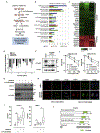
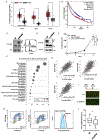
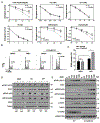
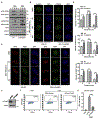
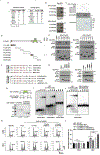

References
-
- Hekmat-Nejad M, et al., Xenopus ATR is a replication-dependent chromatin-binding protein required for the DNA replication checkpoint. Curr Biol, 2000. 10(24): p. 1565–73. - PubMed
-
- de Klein A, et al., Targeted disruption of the cell-cycle checkpoint gene ATR leads to early embryonic lethality in mice. Curr Biol, 2000. 10(8): p. 479–82. - PubMed
-
- Cortez D, et al., ATR and ATRIP: partners in checkpoint signaling. Science, 2001. 294(5547): p. 1713–6. - PubMed
-
- Bomgarden RD, et al., A novel protein activity mediates DNA binding of an ATR-ATRIP complex. J Biol Chem, 2004. 279(14): p. 13346–53. - PubMed
MeSH terms
Substances
Grants and funding
LinkOut - more resources
Full Text Sources
Molecular Biology Databases
Miscellaneous

